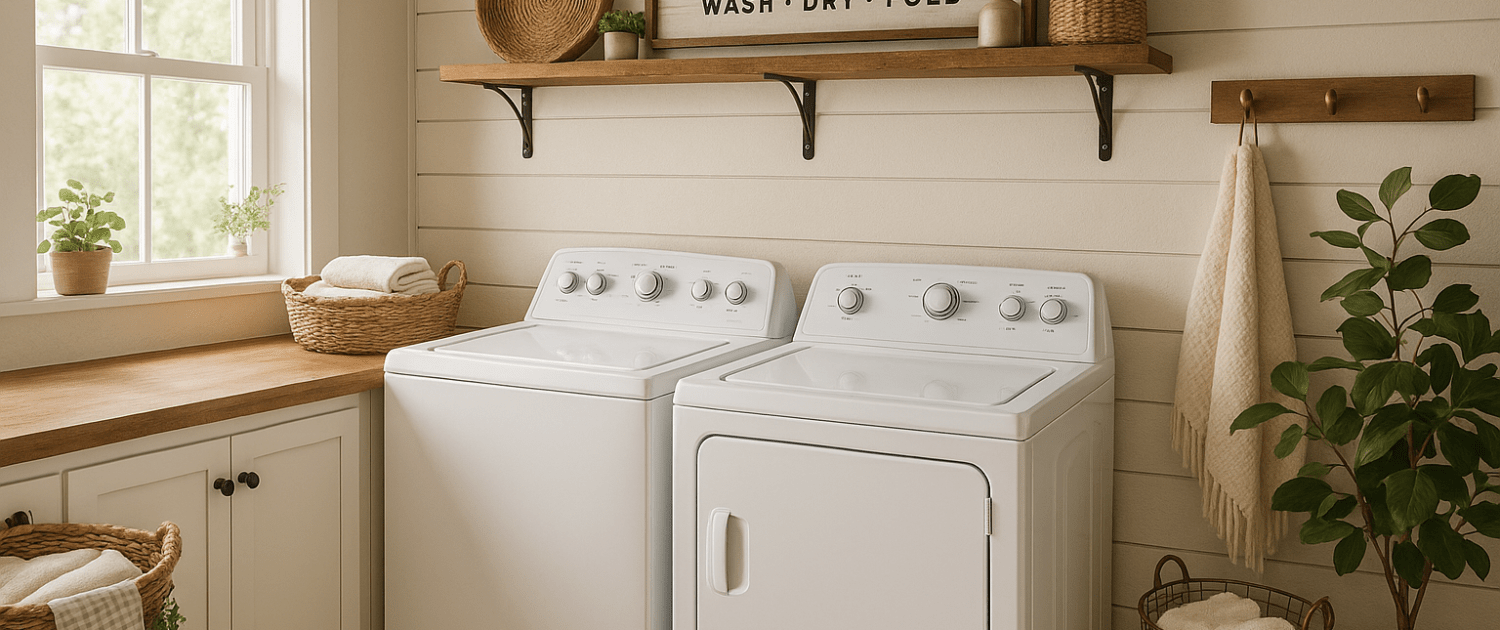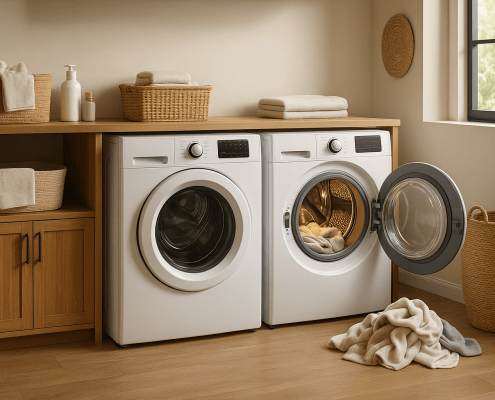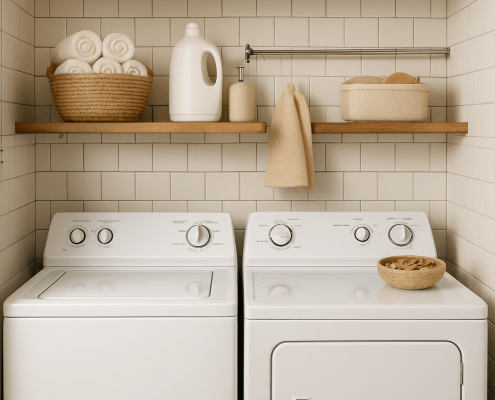Troubleshooting a top-loading Maytag washer not agitating/spinning
Steven E / Friday May 23, 2025
Is your Whirlpool top-loading washer refusing to agitate or spin, leaving you with soggy laundry? Before you call for repairs, try this simple DIY fix that could solve the problem and have your washer working in no time. Scroll down to watch our step-by-step how-to video and get your machine back on track!
Looking for the right part? Enter your appliance model number below to find the exact match and get your appliance running like new again!
Is your Whirlpool top-loading washer stuck, refusing to agitate or spin? Don’t call for repairs just yet. We’ll guide you through the common culprit and an easy fix that could get your machine back in action fast!
If you need any replacement parts for your Whirlpool washer, you can enter your model number at AppliancePartsPros.com to order them. Most orders arrive in just two business days, and we have thousands of free guides to show you how to install your new parts.
Watch the repair here: How To Troubleshoot A Maytag Washer Not Agitating Or Spinning
The information in this article may not apply to your specific appliance model. We recommend consulting your manufacturer’s documentation or contact us with any questions.
What you need
- 1/4″ nut driver
- Phillips head screwdriver
- Multimeter
- Channel locks
- 7mm socket and ratchet
- 4mm Allen wrench
The tools you need may vary based on your appliance model and its fasteners, so be sure to check the user manual or follow the manufacturer’s instructions for the right tools.
Safety precautions
When working on any appliance, always keep safety first to avoid personal injury or damage to the appliance or its parts. Here are some tips to keep in mind:
- Always power off and unplug your appliance or switch off the circuit breaker before you attempt any maintenance or replacement work. This keeps you safe by eliminating any risk of electric shock.
- If the appliance has recently been used, give it plenty of time to cool down before working on it.
- Take your time while working to prevent accidents and personal injuries. Rushing is the enemy of precision.
- Work in a well-lit area so you can see and access appliance parts.
- Keep your workspace free of clutter and other obstacles. Keep children and pets away from the work area.
- Never work on internal parts with wet hands. Make sure the work area is completely dry.
- Check the user manual to see if there are specific installation or safety instructions related to your appliance or replacement part.
- Be gentle when handling or removing parts. Excessive force might damage the appliance or cause personal injury.
- Wear insulated work gloves to protect your hands from sharp metal parts and debris.
- When working with wires, avoid touching any exposed wires or terminals. If you need to touch a wire, use a non-conductive tool or wear insulating gloves to prevent electrical shock.
- Always take photos or make a note of wiring terminals or other connections before disconnecting them to make reassembly easier.
- Don’t test live voltage with a multimeter if you’re unfamiliar with how to prevent short-circuiting.
- Consider wearing safety glasses and/or a dust mask when working with chemicals, dust or a large amount of debris to prevent irritation or injury.
- Turn off the water supply at the outlet before beginning repairs. Keep towels ready to catch any residual water in the system when removing parts.
How to troubleshoot a Whirlpool washer that won’t agitate or spin
Follow these steps to identify and fix the issue preventing your washer from agitating or spinning.
Step 1. Check the power and water supply
- Confirm the washer is plugged in and receiving power.
- Check that the water supply is turned on.
- Start a cycle and observe whether the washer fills with water.
Step 2. Check the water level
- Set the washer to a small load cycle to test the pressure transducer.
- Observe if the water level is correct.
- If the water level is incorrect, drain the tub completely.
- Disconnect power to the washer by unplugging the power cord or turning off the circuit breaker.
- Remove the console panel using a ¼” nut driver to remove the screws securing the rear panel.
- Insert a putty knife at the front corners of the console to release the clips.
- Lift the console to access the main control board and water valve.
- Check the hose connection between the control board and the pressure dome.
- Confirm the hose is not pinched, crimped, or obstructed.
- Disconnect the hose and blow into it to clear any debris, suds, or water.
- Inspect the hose for leaks and replace it if needed.
- If the issue persists, replace the main control board.
- Restore power and run a test fill cycle.
Step 3. Test the lid lock
LIVE VOLTAGE WARNING: For this test, the washer needs to be plugged in and powered on. Please be very careful to protect yourself from electric shock, which has the potential to cause serious injuries. Don’t ever test live voltage if you’re uncomfortable using a multimeter.
- Check for error codes F5E1, F5E2, F5E3, or F5E4.
- Check that the lid closes properly with no obstructions.
- Verify the J6 connector is fully inserted into the main control board.
- If J6 is properly seated, test voltage using a multimeter set to DC voltage.
- Measure between J6 pin 7 and J18 pin 3.
- If the voltage is greater than 1VDC, replace the main control board.
- If the voltage is 0VDC, switch the multimeter to VAC and measure between J6 pin 2 and J12 pin 3.
- Enter service diagnostic mode by selecting any three buttons except power and pressing them in sequence three times within eight seconds.
- Wait for all indicators to illuminate, showing 888 in the display.
- Press the second button from the initial sequence to enter service test mode.
- Use the Soil Level and Temperature buttons to navigate test functions.
- Select Function 000 for the Lid Lock Test and press Start.
- Monitor voltage spikes.
- If the latch does not move and F5E2 appears, replace the lid lock.
- If no voltage spikes occur, replace the main control board.
Step 4. Test the drive system
- Activate service diagnostic mode.
- Check for error codes F7E3, F7E4, F7E5, F7E6, or F7E7.
- Run the heavy agitation test.
- If the motor runs for 15-20 seconds, the motor and wiring are good.
- Test the spin cycle.
- If the motor hums briefly and stops, check for error codes.
Step 5. Test the shifter
- Close and lock the lid.
- Remove all water and clothes from the tub.
- Perform agitation and spin tests in service diagnostic mode under tests 10-14.
- If the tests fail, unplug the washer.
- Check if the motor and shifter can move independently.
- If they are locked together, inspect the shifter slider.
- Tilt the washer back and remove the motor cover.
- Remove the motor stator and shifter coil to check the slider’s movement.
- If the slider moves freely, check the basket and impeller.
- If the basket and impeller do not turn freely, identify the obstruction.
- Inspect the J4 connector on the main board to confirm it is fully inserted.
- If loose, reconnect and repeat tests.
- Restore power and set a voltmeter to AC voltage.
- Connect probes to J4 pin 1 and J4 pin 7.
- Activate the shifter motor by commanding spin or agitate in service test mode.
- If 120VAC is detected, inspect the shifter and wiring.
- Check for loose electrical connections to the shifter.
- If the wiring is faulty, replace the lower washer harness.
Step 6. Test the motor
NOTE: Generally, for every 1 degree in temperature difference, 2 Ohms could be added or subtracted. If the temperature in your home is cooler, resistance would be subtracted.
- Run low, mid, and high-speed spin tests in service diagnostic mode.
- If the motor fails, unplug the washer.
- Check if the impeller turns freely and is not obstructed.
- Check the J1 connector on the main control board.
- Confirm the connector is fully inserted.
- If loose, reconnect and retest.
- Measure motor resistance at the J1 connector on the main board.
- Check resistance between pin 1 and pin 3, expecting 8-10 ohms.
- Check resistance between pin 3 and pin 4, expecting 8-10 ohms.
- If resistance is above 10 ohms, inspect the motor connection.
- Tilt the washer back and check the motor connection on the drive plate.
- If loose, reconnect and repeat tests.
- If resistance values fail, inspect the motor’s electrical connection cover.
- If secure, replace the drive motor.
- If motor tests pass but it does not run, replace the main control board.
- Reassemble all parts and panels.
- Restore power. Run service diagnostics to verify the repair.
More information
Thank you for reading! We hope this guide helped you get your Whirlpool washer working again.
If you have any other appliance repair needs or projects, don’t hesitate to explore our other troubleshooting guides and videos.
If you need replacement parts or some extra help with ordering them, grab your model number and head over to AppliancePartsPros.com, where you can chat with a pro, read our DIY blog and more.
Don’t forget to subscribe to us on YouTube and follow us on Facebook, Twitter and Instagram!
With nearly a decade of experience in providing top-notch customer service regarding appliance parts and repair, Steven enjoys sharing practical advice, troubleshooting tips, and interesting information to help readers stay informed.





